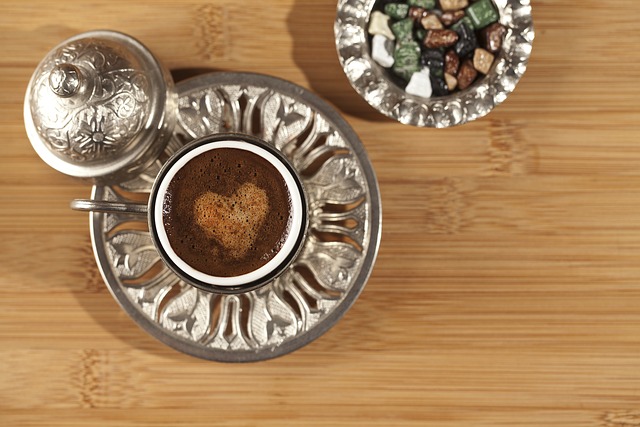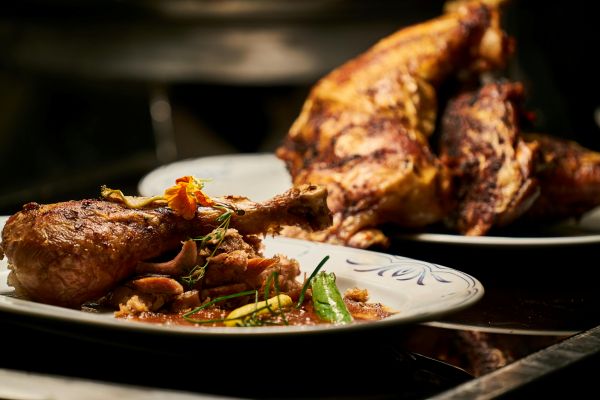How to make Turkish coffee without cezve
A well-known Turkish proverb describes coffee as: “Coffee should be black as hell, strong as death, and sweet as love.“

Have you ever craved the rich, bold taste of Turkish coffee but found yourself without a traditional cezve? You’re not alone. While the cezve—an iconic small pot designed specifically for brewing this centuries-old beverage—is a cornerstone of authentic Turkish coffee culture, it’s not the only way to enjoy this flavorful ritual. In fact, with a few clever adjustments and the right tools, you can recreate the magic of Turkish coffee right in your kitchen.
In this guide, you’ll discover how to craft an authentic cup of Turkish coffee without a cezve, preserving the tradition while adapting it to your modern kitchen.
I. Essential Ingredients and Tools

Choosing the Right Coffee Grind
To achieve the perfect cup of Turkish coffee, you need very finely ground coffee, almost like powdered sugar in texture. If you can’t find pre-ground Turkish coffee, use a coffee grinder to achieve an ultra-fine consistency.
The Importance of Fresh, Cold Water
Using cold, fresh water is crucial for proper extraction. Since Turkish coffee is brewed slowly, starting with cold water helps control the brewing process and enhances the final flavor.
Alternative Brewing Tools You Can Use
If you don’t have a cezve, don’t worry! Here are some great substitutes:
- A small saucepan
- A tiny pot or milk frother
- A small stainless steel or ceramic pot
Optional Additions: Sugar, Cardamom, or Spices
Turkish coffee is often enjoyed plain (sade) or with sugar. If you like a hint of spice, consider adding:
- Cardamom for an aromatic touch
- Cinnamon for warmth
- Clove for a slightly bold kick
II. Step-by-Step Guide to Brewing Without a Cezve
1. Preparing Your Ingredients
For one cup of Turkish coffee, you’ll need:
- 1 cup (about 90ml) of cold water
- 1 heaping teaspoon of finely ground Turkish coffee
- Sugar (optional)
Mix these ingredients directly in your small pot.
2. Heating the Coffee Mixture Correctly
Place the pot on the lowest heat setting. Stir gently until the coffee dissolves into the water, then stop stirring. Let it heat up slowly to extract maximum flavor.
3. Achieving the Signature Foam Layer
Turkish coffee is known for its thick, velvety foam. To get that signature layer:
- Allow the coffee to bubble gently as it heats.
- When the foam starts to rise but before it overflows, remove the pot from heat.
- Carefully spoon some foam into your serving cup.
- Return the pot to the heat and let it foam up one more time before pouring the rest into the cup.
4. Timing the Brew for Optimal Flavor
Brewing too fast can make the coffee bitter and watery. The process should take 3-5 minutes on low heat. Patience is key!
III. Tips for Perfecting Your Turkish Coffee

Stirring Techniques for Maximum Aroma
- Stir only in the beginning to mix the coffee and sugar.
- Avoid stirring once it starts heating to keep the foam intact.
Managing Heat for Slow, Even Brewing
- Use low heat for a gradual build-up of foam and rich flavor.
- Avoid boiling, as it can destroy the delicate coffee oils.
How to Serve Turkish Coffee Traditionally
- Serve in small cups to highlight its richness.
- Accompany it with a glass of cold water to cleanse the palate.
- Offer Turkish delight or a piece of dark chocolate for a sweet contrast.
IV. Enhancing the Experience Without a Cezve

Using Traditional Serving Cups
Even if you don’t have a cezve, you can enhance your Turkish coffee experience by serving it in traditional small Turkish coffee cups (fincan), which help maintain the rich aroma and flavor.
Pairing with Turkish Delights or Sweets
Turkish coffee is best enjoyed with a sweet treat. Some great pairings include:
- Turkish delight (lokum)
- Baklava
- Dried fruits and nuts
Creating an Authentic Atmosphere at Home
To fully embrace the Turkish coffee experience:
- Use traditional coffee sets if available.
- Savor the coffee slowly, appreciating each sip and its deep flavors.
V. Common Mistakes to Avoid
Overheating the Coffee
If the coffee is heated too quickly or boiled, it loses its signature foam and can develop a burnt taste. Always use low heat for a slow, steady brew.
Using the Wrong Grind Size
Using coarse or medium-ground coffee instead of an ultra-fine Turkish coffee grind will result in a weak, grainy texture. Make sure your coffee is ground as finely as possible.
Skipping the Foam Creation Step
The foam is a crucial part of Turkish coffee’s unique character. If you pour the coffee too soon or stir it excessively while brewing, you might lose the foam. Be patient and follow the foam-building process carefully.
FAQ: Making Turkish Coffee Without a Cezve
-
Can I make authentic Turkish coffee without a cezve?
Yes! While a cezve is traditionally used, you can still make delicious Turkish coffee using a small pot or saucepan. The key is to maintain low heat and follow the same brewing technique to achieve the signature foam and rich flavor.
-
Which type of coffee grind should I use?
Turkish coffee requires an extremely fine coffee grind—much finer than what you’d use for espresso. The powder-like texture is essential for creating the thick, velvety consistency that defines this unique brewing method.
-
Why is using fresh, cold water important?
Starting with fresh, cold water helps control the brewing temperature and allows the coffee to develop its full flavor slowly. It also helps create the characteristic foam layer that’s essential for an authentic cup.
-
Can I add sugar or spices to my Turkish coffee?
Absolutely! Traditional Turkish coffee often includes sugar added during brewing—not afterward. You can also experiment with flavors like cardamom or other spices to enhance the depth and aroma of your coffee.
-
How do I know when my coffee is ready?
Watch for the foam rising to the surface—this is a sign your coffee is nearly done. Remove it from the heat just before it boils over to preserve the foam. Serve immediately for the greatest flavor and texture.
-
Is it necessary to stir Turkish coffee while brewing?
Yes, but only at the beginning. Stir the coffee mixture thoroughly before placing it on heat to ensure everything is evenly combined. Once it starts brewing, avoid stirring to maintain the creamy foam on top.








I’ve recently started a web site, the info you offer on this site has helped me tremendously. Thanks for all of your time & work.
Definitely, what a splendid website and enlightening posts, I will bookmark your website.All the Best!
Hello There. I discovered your blog using msn. That is an extremely smartly written article. I will make sure to bookmark it and return to read more of your useful information. Thanks for the post. I’ll definitely comeback.